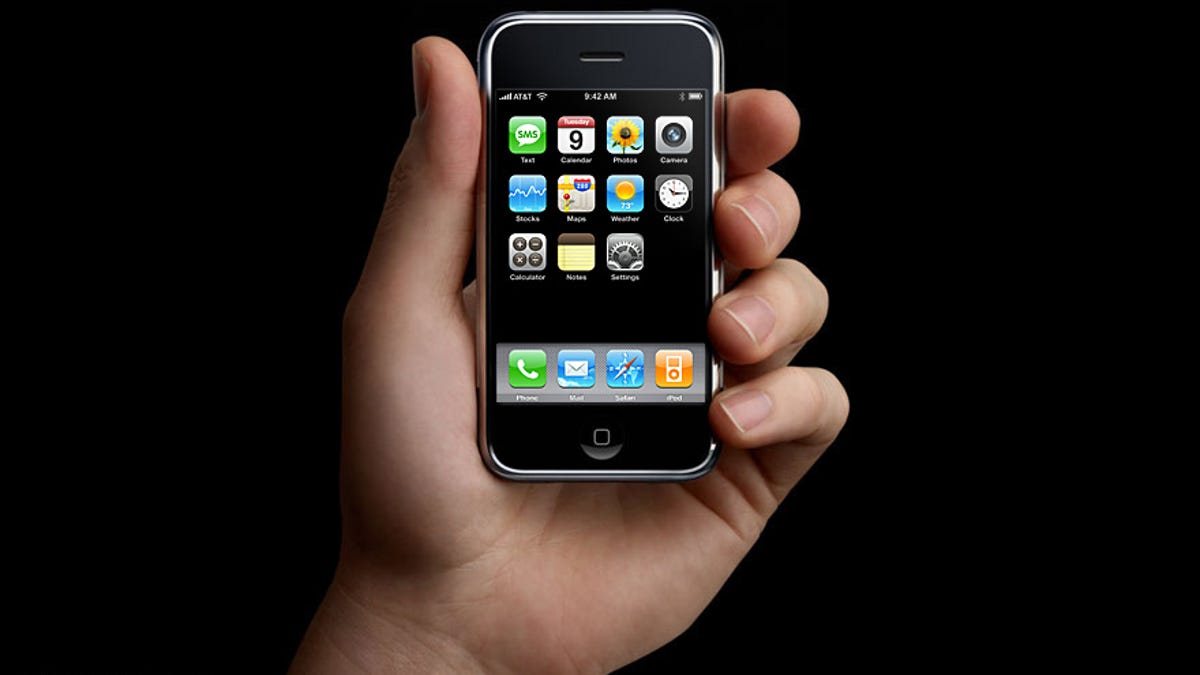The iPhone's features: What's new, what's not
Apple's iPhone has a host of noteworthy features but not all of them are new.

Unless you've cut yourself off from all media access this year, you know that on Friday, June 29 Apple will release its iPhone with
So while we can't tell you just yet whether the iPhone will live up to the hype, and more importantly, whether it will be a good phone, we can tell you what features the iPhone will offer and whether those features are the first of their kind. A lot of readers have questioned us as to whether the iPhone's features really are revolutionary, so we offer the following comparisons. While a few of its offerings are new to the cell phone world, the appeal of the iPhone lies more in its promise to do things differently, and perhaps better. Once we get our review model, we'll be able give you a thorough assessment. We note that you might know a lot of this already, so if that's the case, we invite you to read about a melodramatic chipmunk instead.
The touch screen
A lot has been made of the iPhone's touch screen and its lack of buttons. Yet the iPhone is not the first cell phone to rely so heavily on a touch screen. The
But will it be easy to use? Will it allow for fast typing? Though these questions are completely warranted--there is a learning curve for a touch screen if you've never used one before--a doomsday scenario doesn't exactly ring true. If other phones use a touch screen so effectively, the iPhone might just be able to do the same. Where the iPhone's touch screen really seems to distinguish itself is in the way you can manipulate things such as your music playlists and your photos. At MacWorld, the way Apple CEO Steve Jobs swept his finger across the display to shuffle music and resize photos was very showy indeed.
Media player
A big attraction of the iPhone is the
On the other hand, the iPhone will not be able to download music wirelessly. Several phones, such as the
Videos
From what we've seen in the iPhone commercials on Apple's Web site, the video experience on the iPhone looks quite pretty. A lot of other cell phones play video, either through 3G services or
Mapping
It doesn't have built-in GPS, but the iPhone is one of the first cell phones with integrated support for Google Maps. Though the application is available for other cell phones, the experience isn't always a seamless one. The
Safari browser
Though it won't be the first cell phone to support a full HTML Web browser, the iPhone will be the first cell phone to feature Safari. Also, the browser will be the integration point for third-party apps, as Jobs announced two weeks ago at his WWDC keynote.
Visual voice mail
At the iPhone announcement, Jobs was eager to point out its visual voice mail feature, which will allow you to choose from a list and go directly to the voice mail you want to hear. The iPhone is the first cell phone we've seen to come integrated with such an application, but alternatives do exist. For example, an application called SimulSays does just about the same thing, but you must download it for use. Also, at the time of this writing, it's available only for the
Camera
The iPhone's 2-megapixel camera is just above average as U.S. camera phones go. The
Battery life
Yes, the iPhone has a longer rated talk time than many other smart phones, but in our CNET lab tests, we've had quite a few devices give us that much juice or more. The
Yet the iPhone could surpass all of the above. And if it could do so with such a large display--high-resolution displays are notorious battery hogs--then that would be impressive. It's also important to note that few people use one application constantly. Actual battery life will depend on how often you switch between applications.
Wi-Fi and 3G
Wi-Fi isn't terribly common on cell phones, so we're glad to see it here. Current Wi-Fi phones include the Cingular 8525, the T-Mobile Wing, and the
Sensors
Thanks to the handset's accelerometer, the display's orientation will adjust automatically when you flip the iPhone on its side. At the moment, most cell phones require you to either press a button to make such a switch, such as on the HTC Touch, or slide the phone's face, as with the
Also, a proximity sensor will turn off the display automatically when you lift the iPhone to your ear for a conversation--we don't see that in other handsets--and an ambient light sensor will adjust the display's brightness for various lighting situations. That's still rare in cell phones--the Rim BlackBerry Curve offers it, for example, but the iPhone won't be the only one.

